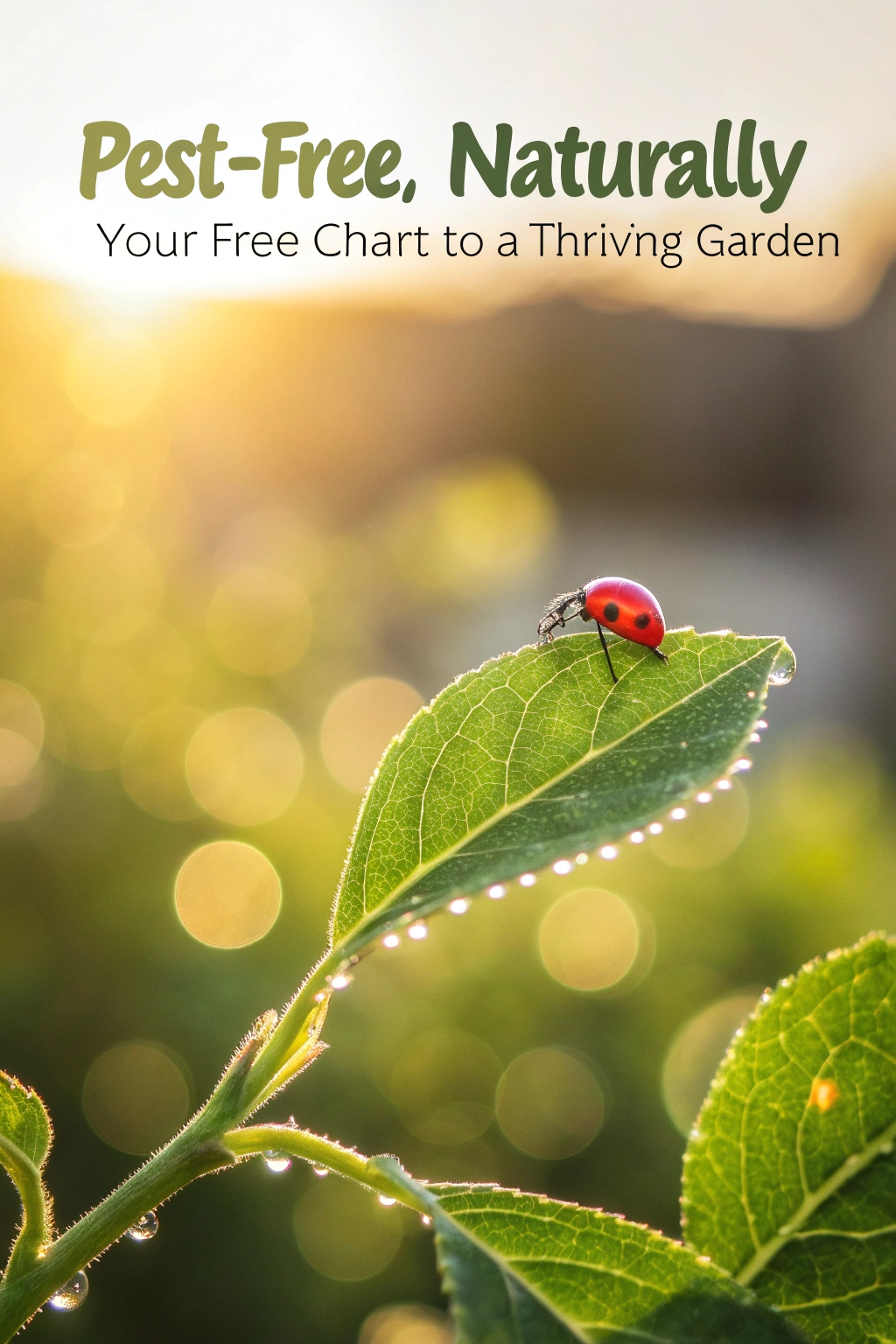Creating a garden for wildlife is a fun way to help animals and plants live together. Choose flowers, trees, and bushes that give food and shelter. Add a water spot for birds and insects. This makes your garden busy with life and colors. You’ll see butterflies, bees, and birds visiting every day. It’s like a playground for nature!
Imagine your garden as a cozy home for wildlife. Plant native flowers to attract bees and butterflies. Add a small pond or bird bath for drinking.
Use rocks or logs for hiding places. These simple steps make your yard a safe place for animals. Start today and watch nature come alive!
Choose Native Plants
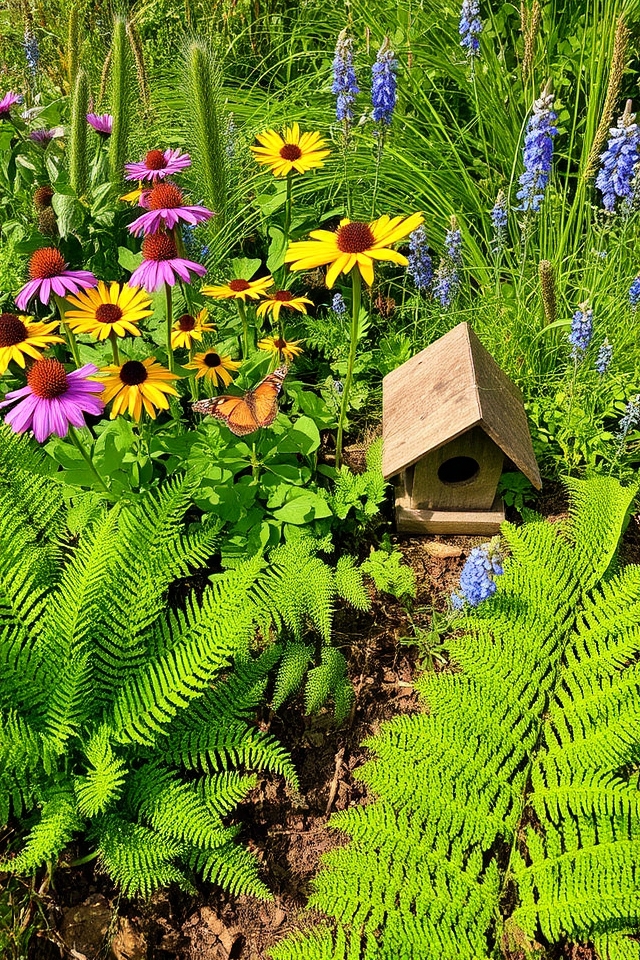
Choosing native plants is a vital step in creating a wildlife-friendly garden. These plants are adapted to the local climate and soil conditions, making them easier to grow and maintain. They provide essential food and habitat for various wildlife, including birds, butterflies, and beneficial insects. By incorporating native species, you can attract pollinators and support the local ecosystem, all while reducing the need for pesticides and excessive watering. Embrace the beauty and diversity of nature by selecting plants native to your area.
Create a Pollinator Garden
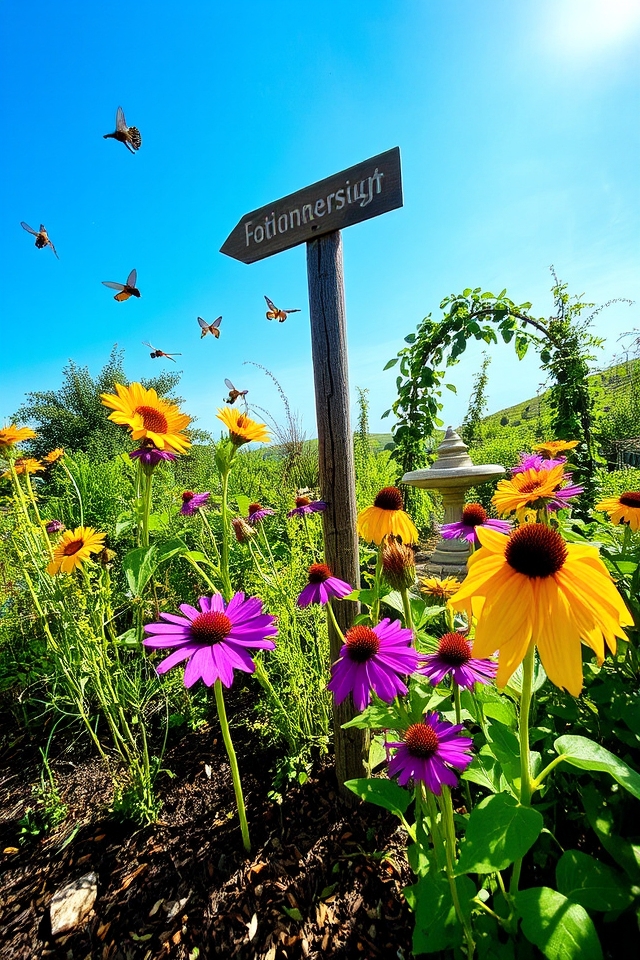
A pollinator garden is a vibrant haven designed to attract bees, butterflies, and other essential pollinators. To create one, select a variety of native flowering plants that bloom at different times of the year, ensuring a continuous food source. Incorporate diverse shapes, sizes, and colors to draw in various species. Avoid pesticides to maintain a safe environment for these helpful creatures. With careful planning, your garden will thrive while supporting local biodiversity and contributing to ecosystem health.
Install Bird Feeders
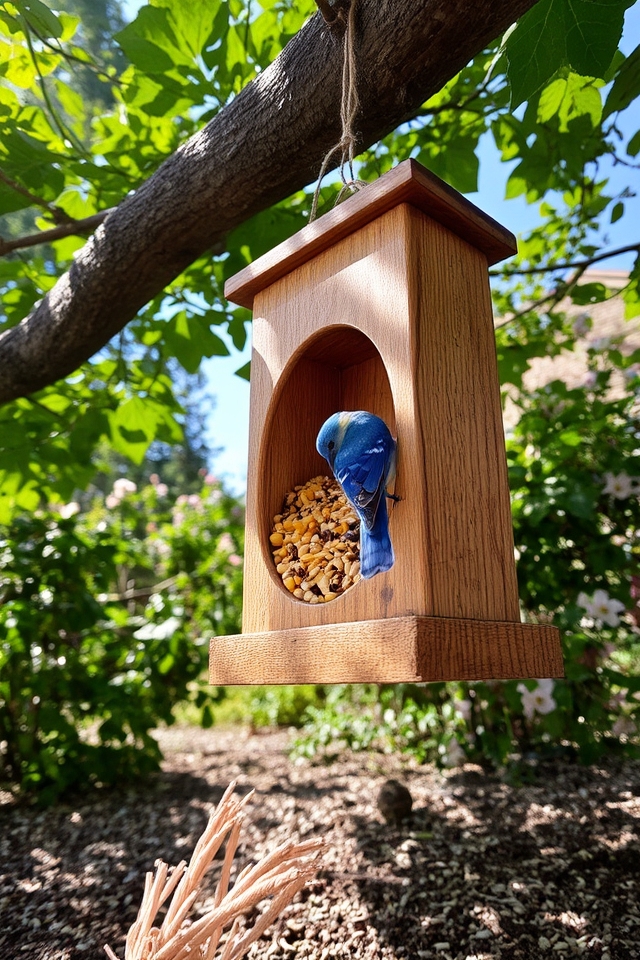
Installing bird feeders is a fantastic way to attract a variety of birds to your garden, enhancing its biodiversity. Choose feeders designed for different bird species, such as tube feeders for finches or platform feeders for ground feeders like sparrows. Position them in sheltered areas, preferably near trees or shrubs, which offer safety from predators. Use quality birdseed to guarantee you are meeting the nutritional needs of your feathered visitors, making your garden a thriving haven for wildlife.
Add a Water Feature
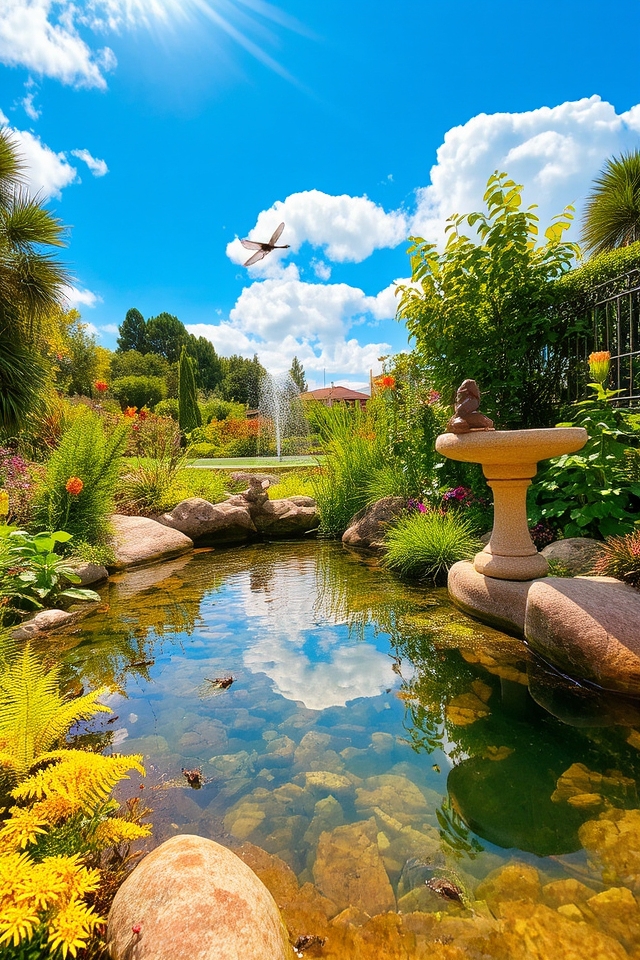
Adding a water feature to your garden is a fantastic way to attract wildlife. Ponds, bird baths, or small fountains create essential drinking and bathing spots for various creatures, including birds, frogs, and beneficial insects. These features can also help maintain a balanced ecosystem by supporting local flora and fauna. Consider incorporating native plants around the water source to enhance the habitat, providing shade and shelter for wildlife while adding beauty to your garden.
Build a Butterfly House
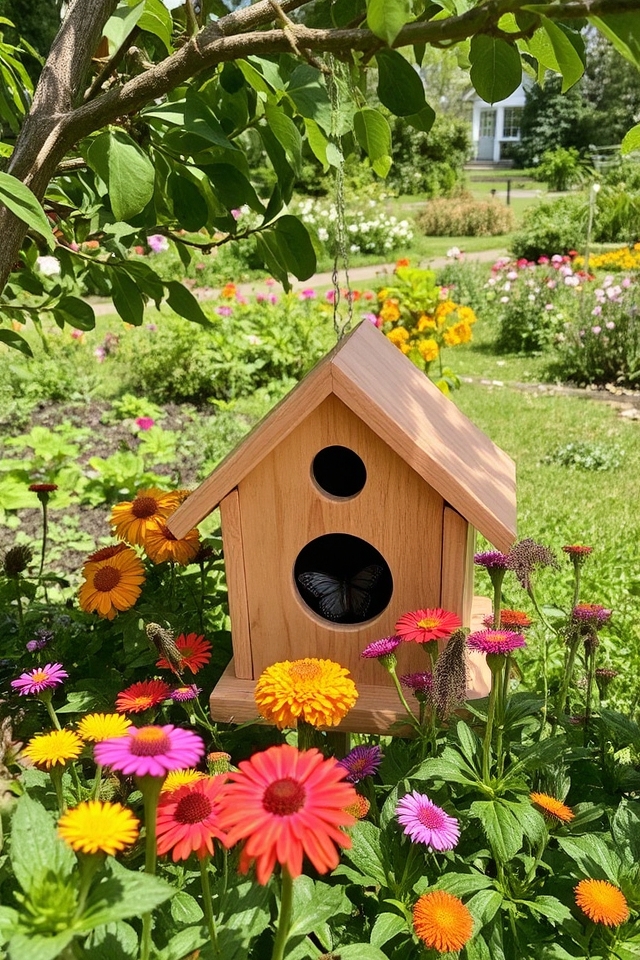
Building a butterfly house is a delightful way to attract these beautiful pollinators to your garden. These structures provide shelter and a safe space for butterflies to rest and breed. To create an effective butterfly house, use untreated wood, incorporate a small entrance hole, and guarantee proper ventilation. Position the house in a sunny spot, surrounded by nectar-rich flowers. By providing a cozy habitat, you’ll not only enjoy the sight of colorful butterflies but also contribute to their conservation.
Create Snags for Insects
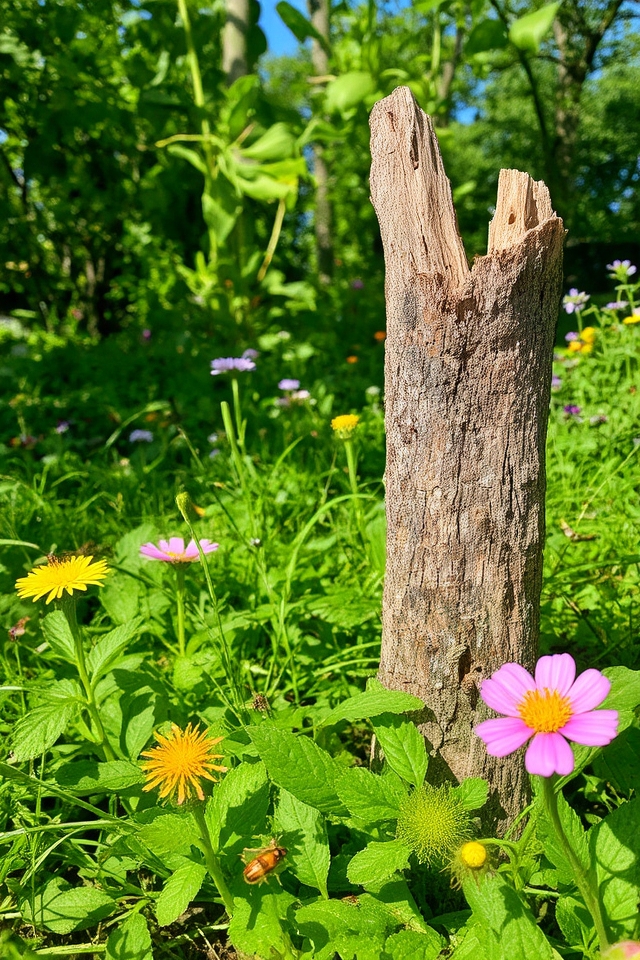
Creating snags for insects involves leaving dead or decaying trees and branches intact in your garden. These natural structures serve as essential habitats for a variety of beneficial insects, such as beetles and bees. The crevices in the wood provide shelter and breeding grounds, while the decaying material offers food sources. By incorporating snags into your garden design, you not only support biodiversity but also enhance the ecological balance, making your space a vibrant haven for wildlife.
Plant a Vegetable Garden
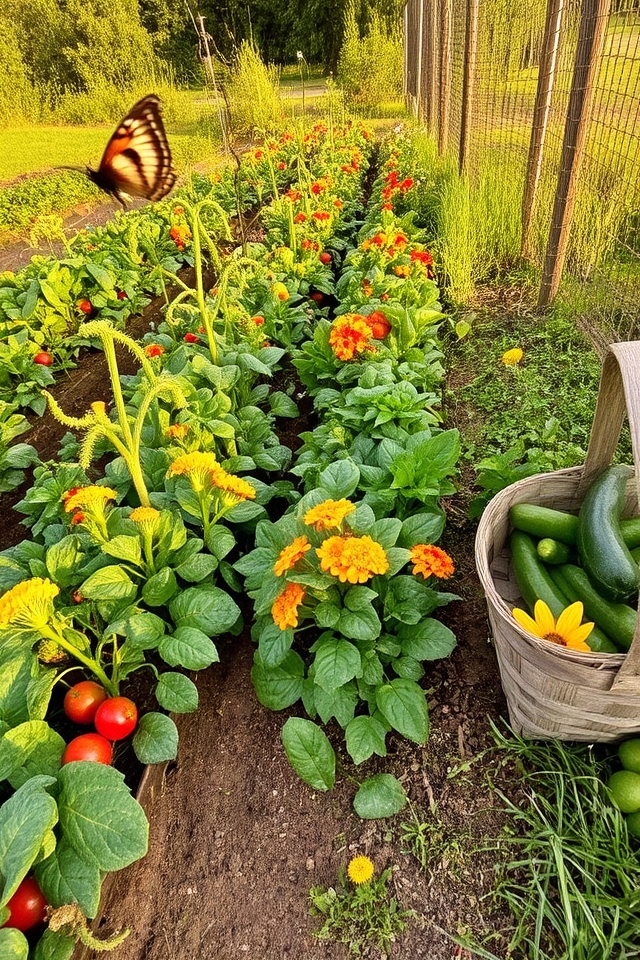
Creating a vegetable garden not only provides fresh produce but also enhances local biodiversity. By incorporating a variety of organic vegetables, you can attract beneficial insects like pollinators and pest predators. Choose native plants alongside your vegetables to support local wildlife habitats. Additionally, using natural pest control methods can promote a healthier ecosystem while encouraging birds, bees, and butterflies to thrive, turning your garden into a vibrant sanctuary for both you and nature.
Incorporate Flowering Vines
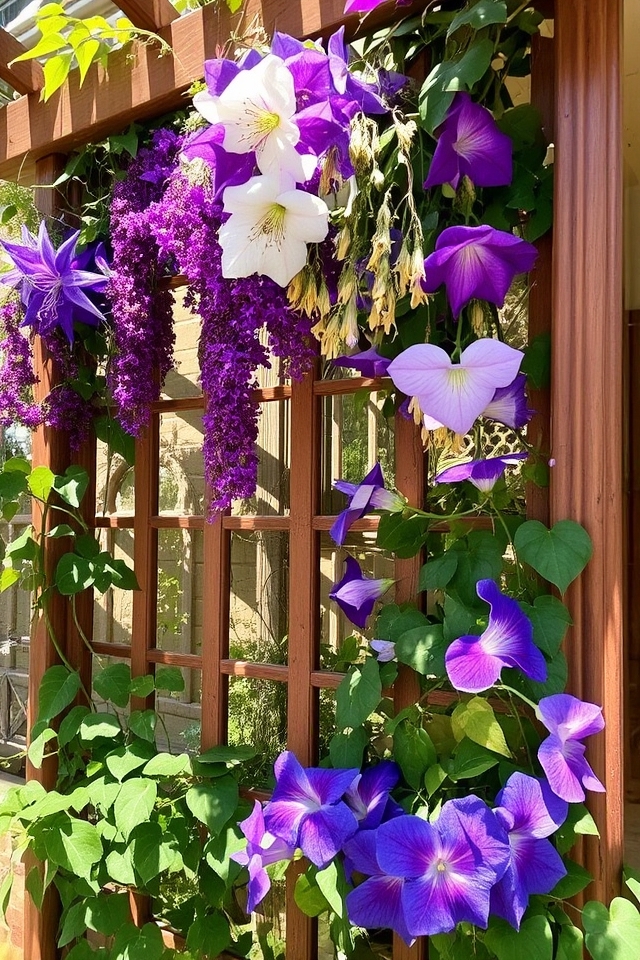
Incorporating flowering vines into your garden is a wonderful way to attract wildlife while adding beauty and vertical interest. Vines such as clematis, honeysuckle, and morning glory provide nectar for hummingbirds and bees, while their foliage offers shelter to birds and small creatures. By creating trellises or arbors for these plants to climb, you enhance your garden’s structure and create inviting habitats that promote biodiversity and a vibrant ecosystem.
Set Up a Bee Hotel
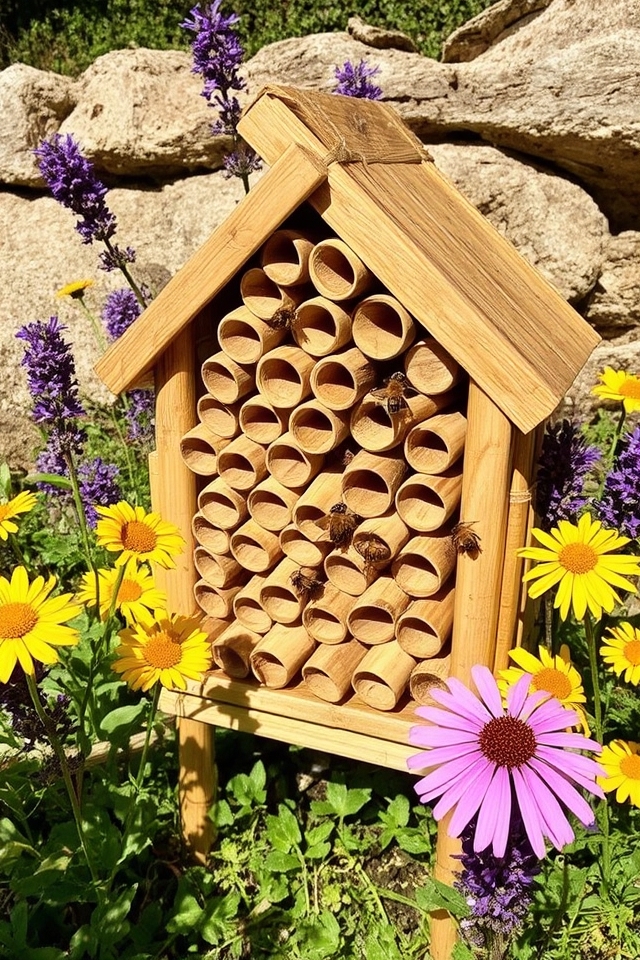
Creating a bee hotel is a fantastic way to support local pollinators, especially solitary bees. To set one up, gather sustainable materials like untreated wood, bamboo sticks, and hollow stems. Arrange them in a sheltered location with good sun exposure, ensuring some drainage. The bee hotel should be at least 3 feet off the ground and protected from rain. This inviting habitat helps increase bee populations and can greatly enhance your garden’s productivity and biodiversity.
Use Organic Gardening Methods
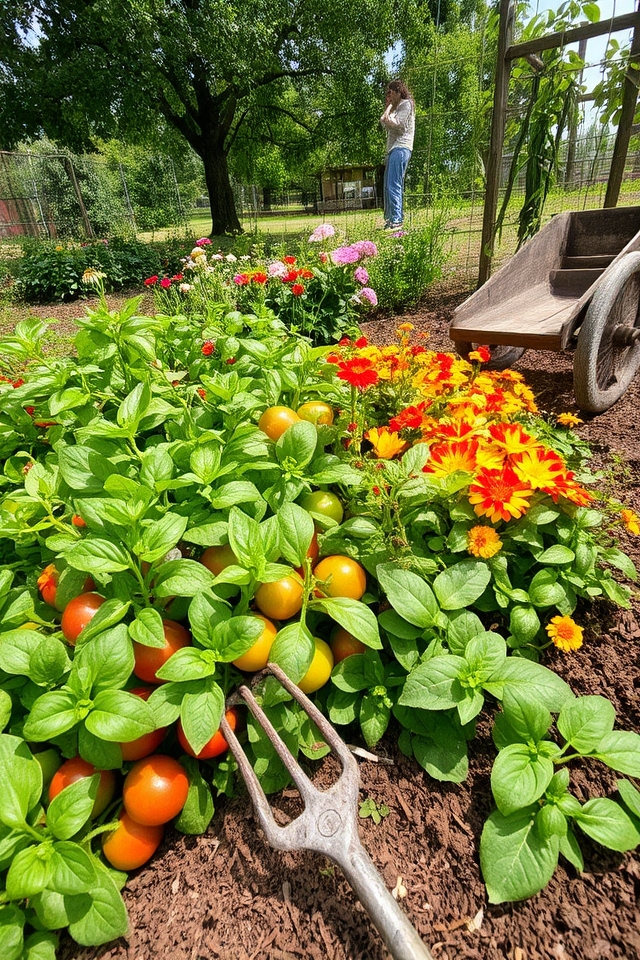
Using organic gardening methods not only promotes a healthier garden but also creates a thriving habitat for wildlife. By avoiding chemical pesticides and fertilizers, you encourage beneficial insects, birds, and other creatures to thrive while maintaining soil health. Natural compost, mulching, and crop rotation enhance biodiversity and soil fertility, leading to a more resilient ecosystem. Embracing organic practices enables your garden to flourish harmoniously with nature, fostering a sanctuary for a diverse range of wildlife.
Create Shelter With Shrubs
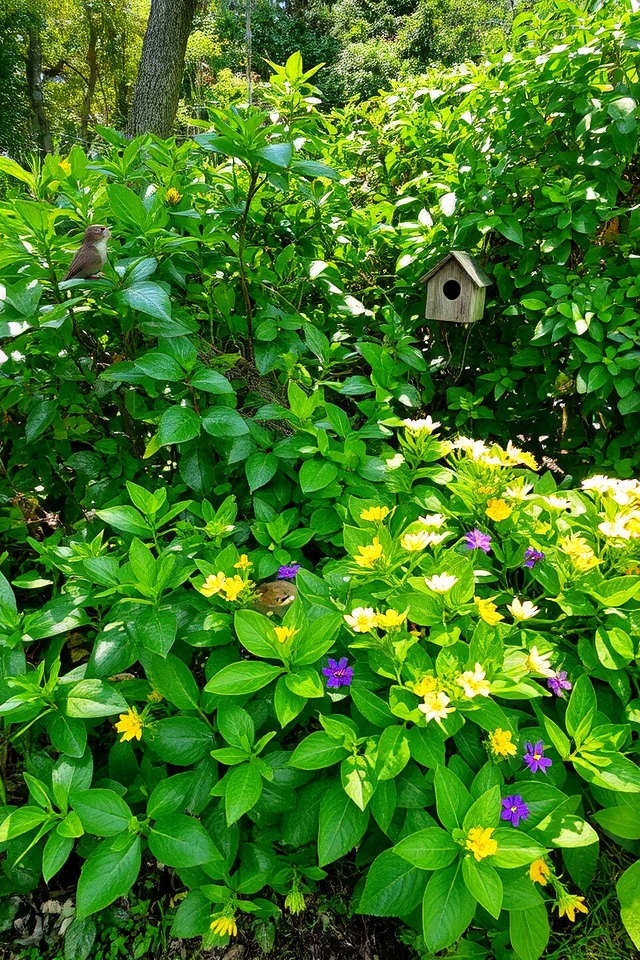
Creating shelter with shrubs is an effective way to provide a safe haven for wildlife in your garden. Dense, leafy shrubs offer refuge for birds, small mammals, and insects, protecting them from predators and harsh weather. Opt for native varieties, as they often attract local wildlife and require less maintenance. Grouping shrubs together forms natural thickets, which can encourage nesting and foster biodiversity, making your garden a vibrant habitat for wildlife to thrive.
Add Evergreen Plants
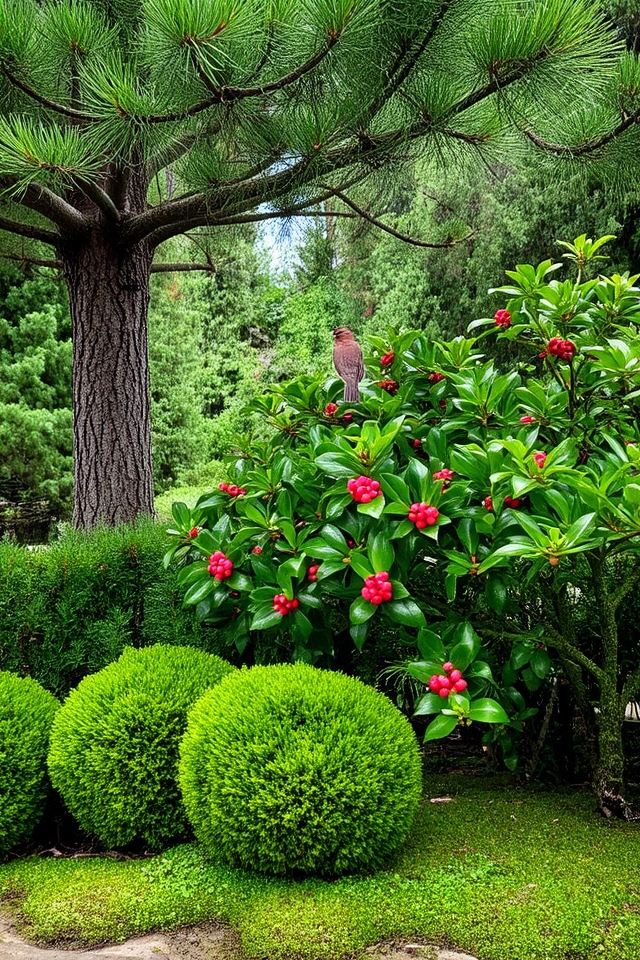
Adding evergreen plants to your garden is a fantastic way to create a year-round habitat for wildlife. These hardy plants provide shelter and food for birds, insects, and small mammals, even in the colder months when other food sources are scarce. Additionally, evergreens offer protection from harsh weather and predators, helping maintain a stable ecosystem. Choose native species that thrive in your area to maximize their benefits and support local wildlife.
Design a Compost Bin
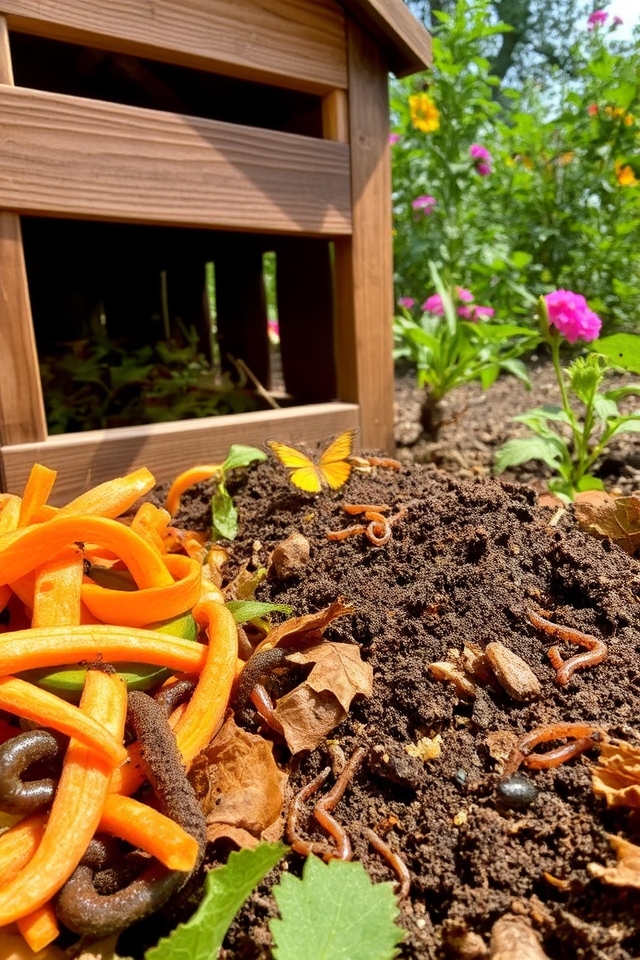
Designing a compost bin is an excellent way to support wildlife while reducing kitchen and garden waste. Start with a simple wooden structure that allows for aeration, or choose a tumbling bin for easy mixing. Make sure it’s accessible for animals like worms and beneficial insects. Incorporate layers of green materials (like food scraps) and brown materials (like dry leaves) to create a balanced ecosystem. This not only nourishes your garden but also attracts helpful wildlife!
Use Mulch for Insulation
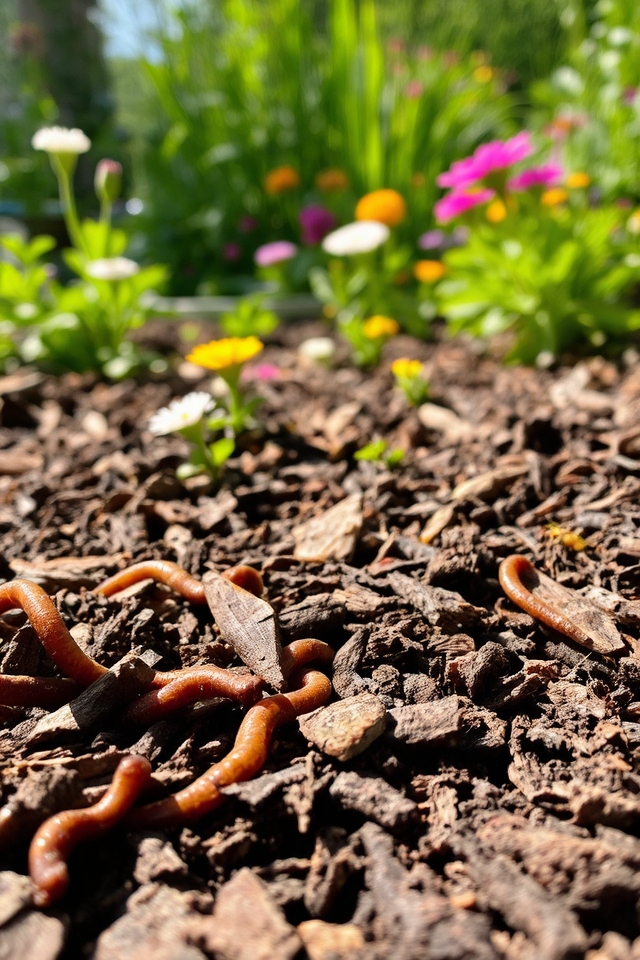
Using mulch in your garden not only offers aesthetic appeal but serves as insulation for the soil. A layer of mulch helps regulate soil temperature, protecting plant roots from extreme heat and cold. This insulation creates a more stable environment for beneficial microorganisms and earthworms, which contribute to a healthy ecosystem. Additionally, mulch retains moisture, reducing the need for frequent watering and providing a habitat for various wildlife, promoting biodiversity in your garden.
Include Fruit-Bearing Plants
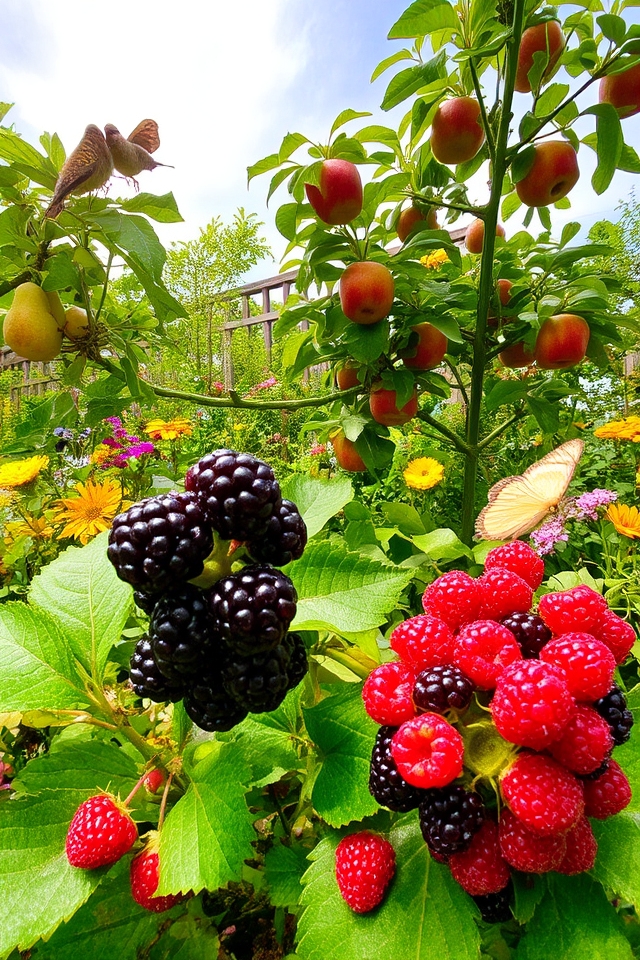
Including fruit-bearing plants in your garden is a fantastic way to attract wildlife while providing delicious produce for yourself. Berry bushes such as blackberries, raspberries, and blueberries are favorites among birds and small mammals. Additionally, fruit trees like apple, pear, and cherry not only offer food for passing creatures but also create a beautiful landscape. By incorporating these plants, you can support local ecosystems and enjoy the fruits of your labor!
Create a Natural Brush Pile

Creating a natural brush pile in your garden is a fantastic way to support local wildlife. Use fallen branches, twigs, and leaves to form a cozy habitat that offers shelter and nesting spots for birds, small mammals, and beneficial insects. Place the pile in a corner of your yard, allowing it to decompose naturally over time. This eco-friendly addition not only boosts biodiversity but also enriches the soil as it breaks down, creating a win-win for your garden and its visitors.
Maintain Seasonal Diversity

Maintaining seasonal diversity in your garden is essential for attracting a variety of wildlife throughout the year. By planting a mix of perennials, annuals, and trees that bloom and produce seeds in different seasons, you can provide food and shelter for birds, insects, and small mammals. Incorporate plants that flower in spring, summer, and fall, as well as a selection of evergreens for winter cover. This not only supports wildlife but creates a vibrant, dynamic garden that changes with the seasons.
Conclusion
By nurturing a wildlife-friendly garden, you’re not just enhancing your outdoor space; you’re creating a thriving ecosystem. Remember, “Nature does not hurry, yet everything is accomplished.” With native plants, water features, and shelter, your garden can attract diverse wildlife while preserving local biodiversity. As you watch butterflies flutter and birds feast, you’ll appreciate the harmony you’ve encouraged. Embrace these ideas, and your garden will blossom into a sanctuary that celebrates the beauty of nature.



